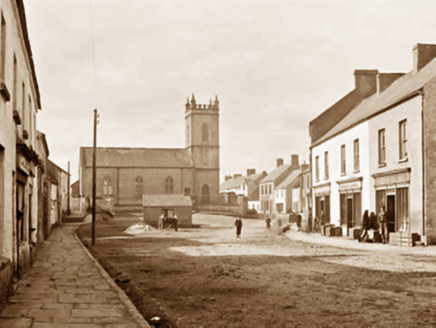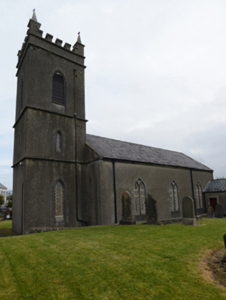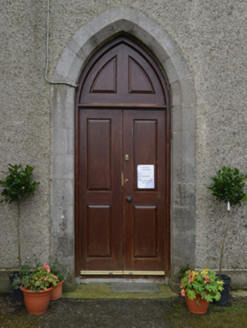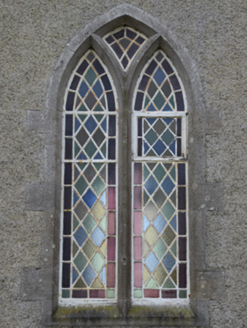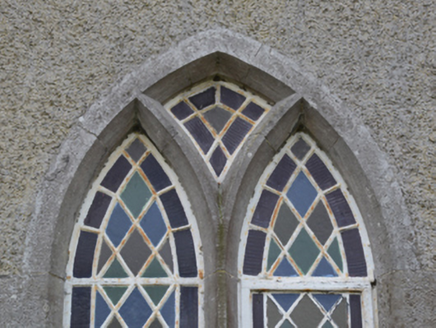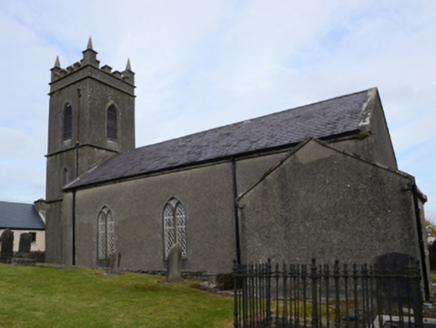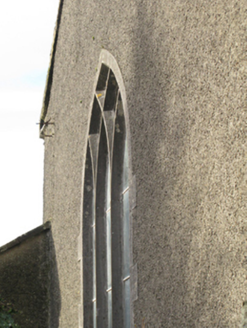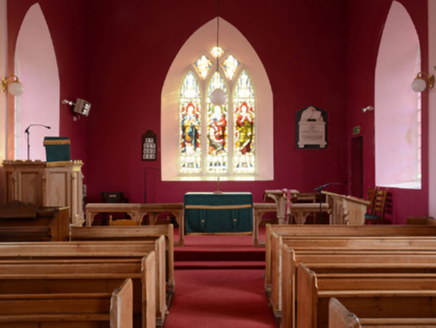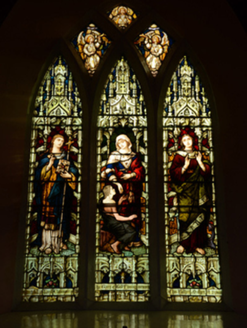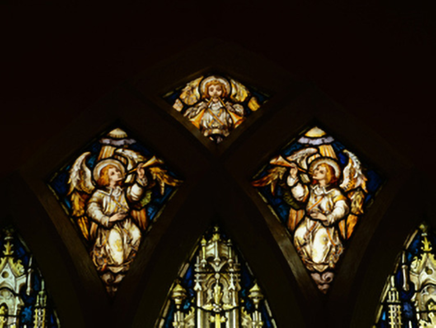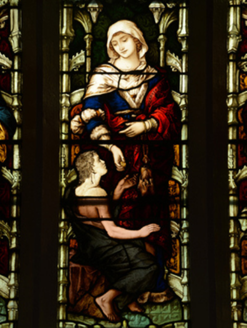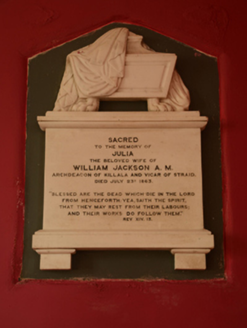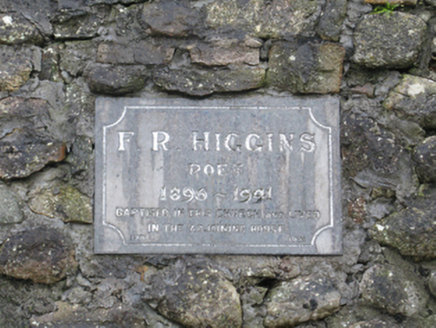Survey Data
Reg No
31206003
Rating
Regional
Categories of Special Interest
Architectural, Artistic, Historical, Social
Original Use
Church/chapel
In Use As
Church/chapel
Date
1800 - 1805
Coordinates
126880, 304008
Date Recorded
26/11/2010
Date Updated
--/--/--
Description
Detached three-bay double-height single-cell Board of First Fruits Church of Ireland church, built 1801; dated 1801, on a rectangular plan with single-bay three-stage tower to entrance (west) front on a square plan. Renovated, 1939. Pitched slate roof with clay ridge tiles, lichen-covered tooled cut-limestone coping to gables, and replacement uPVC rainwater goods on roughcast cut-limestone eaves with cast-iron rainwater goods (south) retaining cast-iron downpipes. Fine roughcast battered walls on rendered chamfered plinth; fine roughcast surface finish (tower) on rendered chamfered plinth with tooled cut-limestone stringcourses including paired tooled cut-limestone stringcourses (bell stage) supporting tooled cut-limestone octagonal pinnacles framing battlemented parapets having tooled cut-limestone "saddleback" coping. Pointed-arch window openings with dragged cut-limestone Y-mullions, and drag edged tooled cut-limestone block-and-start surrounds having chamfered reveals framing fixed-pane fittings having stained glass margins centred on cast-iron lattice glazing bars. Pointed-arch window opening (east) with dragged cut-limestone interlocking Y-mullions, and drag edged tooled cut-limestone block-and-start surround having chamfered reveals framing storm glazing over fixed-pane fittings having leaded stained glass panels. Lancet window opening (tower) with drag edged tooled cut-limestone surround having chamfered reveals framing fixed-pane fitting having margins centred on cast-iron lattice glazing bars. Lancet "arrow loop" openings (second stage) with drag edged tooled cut-limestone surrounds having chamfered reveals. Pointed-arch openings (bell stage) with drag edged tooled cut-limestone surrounds having chamfered reveals framing louvered timber fittings. Interior including vestibule (west); full-height interior with timber panelled choir gallery (west) on octagonal pillars, baptismal font on an octagonal plan on polished pink marble pedestal, carpeted central aisle between timber pews, Gothic-style timber panelled pulpit (1861) on an octagonal plan with Gothic-style timber clerk's desk (1861), and carpeted stepped dais to chancel (east) with chamfered timber balusters supporting carved timber communion railing centred on cloaked altar table below stained glass memorial "East Window" (1908). Set in landscaped grounds with repointed tooled limestone ashlar piers to perimeter having cut-limestone shallow pyramidal capping supporting "Fleur-de-Lys"-detailed cast-iron double gates.
Appraisal
A church 'erected by parochial assessment' (Lewis 1837 II, 639) representing an integral component of the ecclesiastical heritage of Foxford with the architectural value of the composition suggested by such attributes as the standardised nave-with-entrance tower plan form, aligned along a liturgically-correct axis; the "pointed" profile of the openings underpinning a contemporary Georgian Gothic theme with the chancel defined by a restrained "East Window"; and the polygonal pinnacles embellishing the tower as a picturesque eye-catcher in the landscape. Having been well maintained, the elementary form and massing survive intact together with substantial quantities of the original fabric, both to the exterior and to the interior where contemporary joinery; altar fittings designed (1861) by William John Welland (c.1832-95) and William Gillespie (1818-99); and the jewel-like Bingham Memorial "East Window" supplied (1908) by Franz Mayer and Company (founded 1847) of Munich and London to a design by William Francis Dixon (1848-1928) repeating motifs from an earlier window (1902) at Saint Paul's Church (Ballysadare) in neighbouring County Sligo, all highlight the artistic potential of a church making a pleasing visual statement in an urban street scene. NOTE: A wall monument signed by Coates of Dublin commemorates Julia Jackson (d. 1863) 'the beloved wife of WILLIAM JACKSON A.M. Archdeacon of Killala and Vicar of Straid'.
